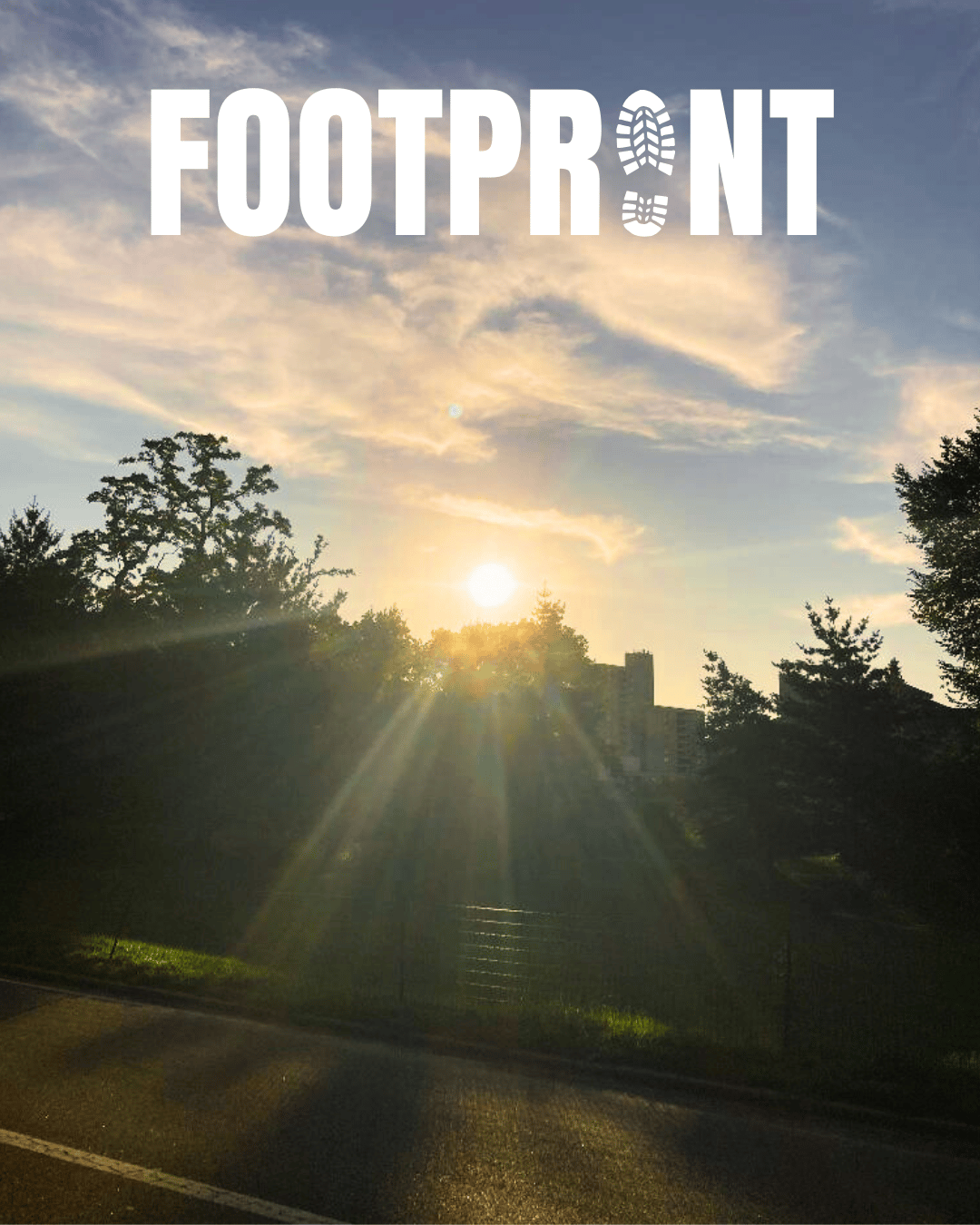
Hello! Welcome back to Footprint. Happy Friday – and happy Fourth of July to US readers.
EDITION #21
⏱ Reflections on Faith Kipyegon’s bid to break the four-minute mile, featuring top coach Juli Benson and leading biomechanist Rodger Kram
💭 Meridia’s Colleen Quigley, Annie Rodenfels and Katie Camarena on launching an athlete-owned pro running team
💡 Words of wisdom from Abby Hall, who capped an extraordinary comeback from injury last weekend when she won Western States Endurance Run
✉ Was this email forwarded to you? Sign up here
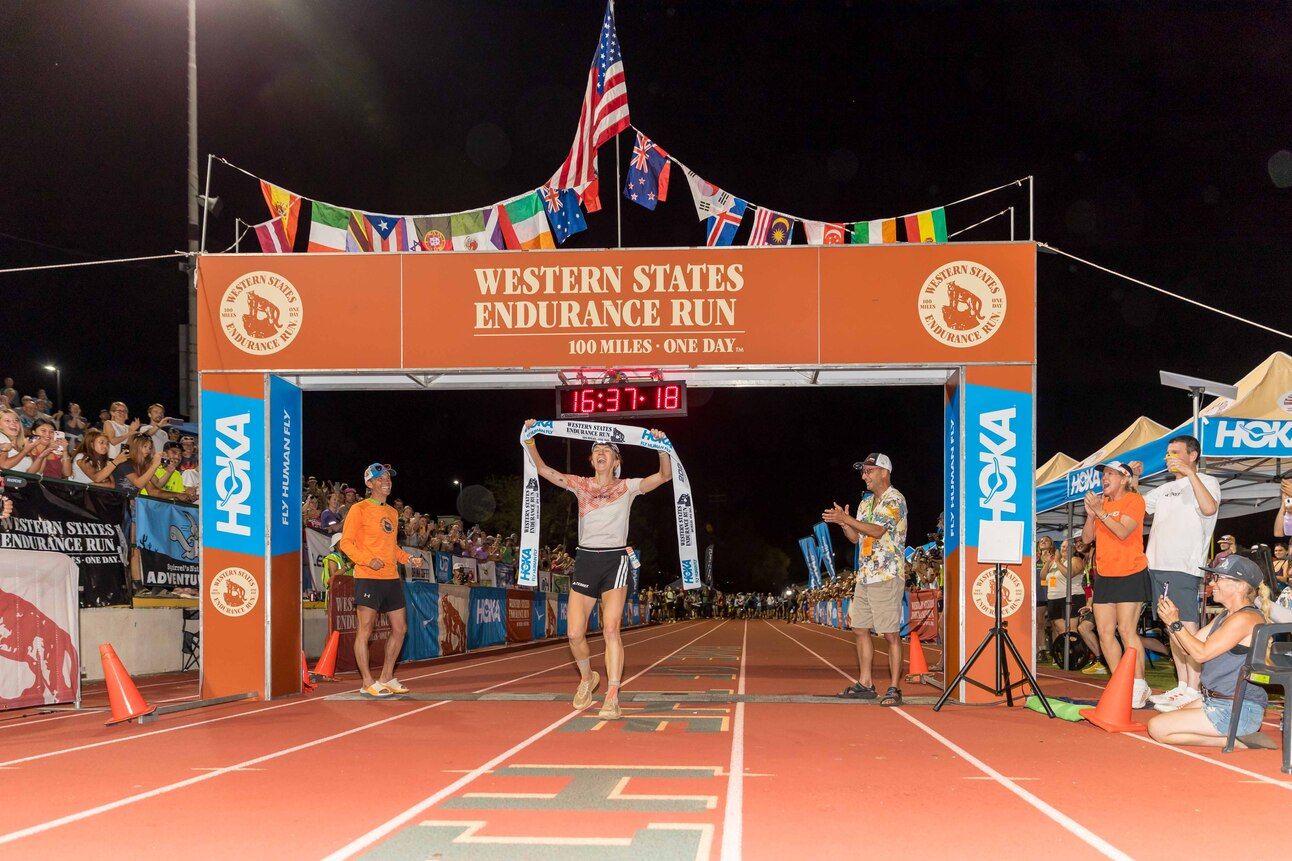
Gary Hughes / Western States Endurance Run
1 🏞️ WESTERN STATES
In temperatures as high as 99°F, Caleb Olson and Abby Hall (pictured) won the 2025 Western States 100-miler. “I’m just excited to not be running anymore,” Olson said after the race, Abby Levene reports in Outside • Read
2 👀 BRAND MYSTERY
What happened to Iffley Road, the popular British running brand that vanished without explanation? Matt Walsh investigates for Trailmix • Read
3 🥇 DULUTH DOUBLE
After Minnesota’s Joel Reichow became the first person to win both Grandma’s Marathon and the Garry Bjorklund Half in Duluth, his team coach Chris Lundstrom reflects on the power of perseverance • Read
4 ✨ MEET MAGIC
Recapping the latest Portland Track Festival, Jeff Merrill describes the “almost supernatural” moment the sun goes down and the lights come on • Read
5 🗳️ RUNNING NYC
Zohran Mamdani, Democratic candidate for New York City mayor, has already run the city twice – finishing the marathon in 2022 and 2024. “Fastest mayoral candidate / slowest new yorker,” he joked in November • Read
REPORT • BREAKING 4
Faith Kipyegon: A Matter Of Time

Nike
The fastest woman to ever run a mile hunched over on a track in Paris, draped in the Kenyan flag. Faith Kipyegon had not broken four minutes.
While the naysayers didn’t wait four minutes to point out they’d been saying nay all along, an exhausted Kipyegon – moments after crossing line, more than six seconds short of the goal – provided some light.
“It’s only a matter [of] time,” she said, “but I think it will come to our way. If it’s not me, it will be somebody else.”
A woman has yet to run a mile in under four minutes. But after academics concluded it was possible, this woman made it more plausible eight days ago.
This bid was always ambitious. And with Nike’s marketing division at the wheel, it was designed no matter what happened to have an impact far beyond Stade Charléty.
“It’s now talked about. You think about it,” Juli Benson, a leading US track coach who competed in the 1500m at the Atlanta 1996 Olympics, told Footprint. “I think it just lifts barriers. It lifts boundaries. And I think that’s always really good for the sport.”
Many athletes tend to build over the course of each season, noted Benson, who thinks Kipyegon might have run “slightly faster” in late September. “Maybe not sub-four.”
But she also couldn’t help but wonder where the idea came from in the first place. Kipyegon “doesn’t really strike me” as a record chaser, she said. “I think she likes to win.”
Simply running against the clock, with no competition? “I just don’t know that was organically from her,” said Benson. “So [it] probably was presented to her, and I’m sure she was extremely intrigued. But also, I think probably she and her coach were pretty aware that this was going to be a very tall order.”
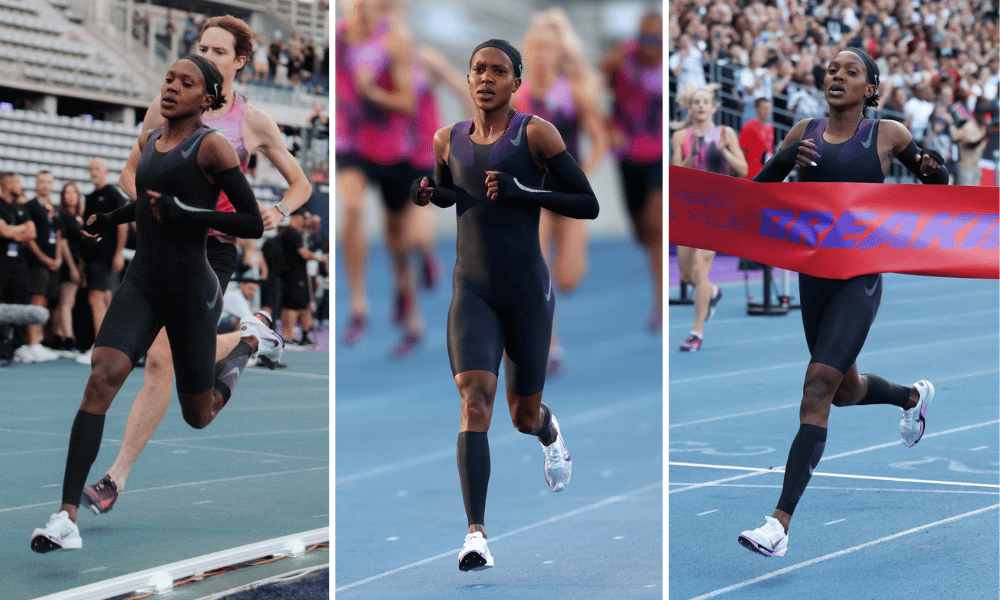
Nike
Kipyegon pushed hard to make it happen. “Based on reading her facial expressions, I think she gave it everything she possibly had,” said Benson. “That’s the most in distress I’ve seen her in a long time.”
The internet is awash with hot takes on why Kipyegon came up short, many from armchair experts who know as much about running a mile at world record pace as they do landing on Mars. You can read them, or you can listen to someone who has spent his career studying physiology and biomechanics.
Rodger Kram, professor emeritus in the integrative physiology department at University of Colorado Boulder, co-authored a paper earlier this year that concluded a woman, namely Kipyegon, could feasibly break four in the mile – with two pacers, 1.2 meters in front and 1.2 meters behind, swapped out for two fresh pacers about halfway.
Nike and Kipyegon ultimately used a different formation: a five-pacer “shield” in front, with six or so more working as a “spoiler” alongside and behind.
Kram was surprised to see significant gaps in the shield. The shield pacers should have almost entirely obscured Kipyegon from certain viewpoints, he suggested, noting at least one moment when photographers were able to get clear shots of her.
“Maybe the formation was great in the wind tunnel but too difficult to execute without a lot of practice,” Kram wrote in an email. “At that instant in time, it seems to me that the ‘shield’ was a ‘funnel’ directing air right at Faith.”
• • •
While Kipyegon did not run the mile in less than four minutes (and there have been queries as to whether she ran 4:06.42, as Nike says, or 4:06.91) she came closer than any woman has before.
When Eliud Kipchoge initially failed to run a sub-two hour marathon in 2017, but came closer than anyone had before, much of the coverage focused on the latter. As Salty’s Grace Cook noted, some outlets did not extend this same grace to Kipyegon, branding her bid a failure.
Both bids were billed in binary terms – in this case, Kipyegon vs. the 4-Minute Mile – so it’s legitimate to consider the outcome through the same lens. But ignoring the wider context would be shortsighted.
Moving another step towards a feat once widely deemed impossible, Kipyegon helped shift the fundamental question away from whether a woman can to when a woman will – a point her sponsor wasted no time incorporating into its marketing.
Sure, this entire exercise may well help Nike sell more shoes. But it might also help inspire girls and women at every level of this sport – be they trying to break four in the mile, run a marathon, or even run at all – to test the limits of what they thought possible.
Seconds can stand for years in the mile. Svetlana Masterkova ran 4:12.56 in 1996, a world record that stood for two decades. Sifan Hassan ran 4:12.33 in 2019. Kipyegon ran 4:07.64 in 2023.
“Watching all these breakthroughs happen, it’s still hard for me to wrap my head around as an old, decrepit athlete,” laughed Benson.
“You kind of start thinking, wow, what are we capable of?” she added. “It’s hard for me to say yes, I absolutely think it will happen, because I’ve run the event and coached the event. But I actually do think it can happen.”
Kipyegon is not done. She’s due to run the 1500m tomorrow at the Prefontaine Classic in Eugene, Oregon, where she hopes to finish in under 3:49 – and break another of her own world records.
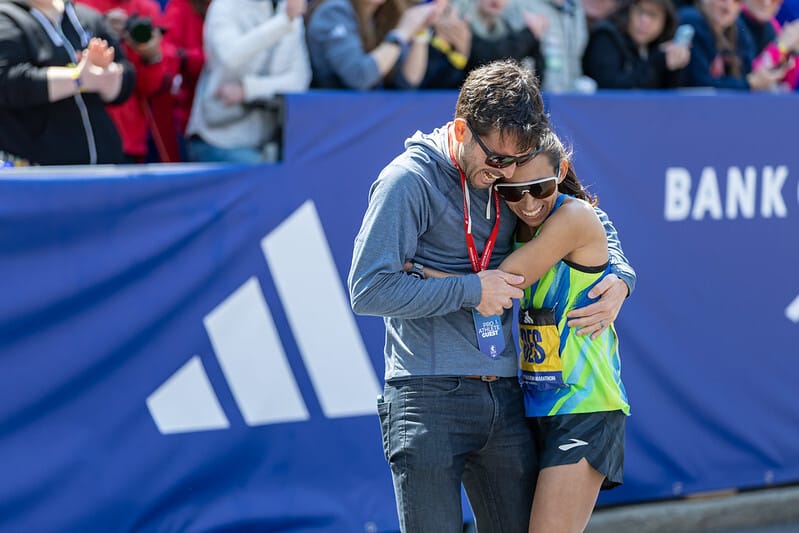
Margot Murphy / Massachusetts Governor’s Press Office
🎧️ SINGLETRACK
🎧️ SOME WORK ALL PLAY
🎧️ LONG RUN LABS
FEATURE • MERIDIA
A Different Route
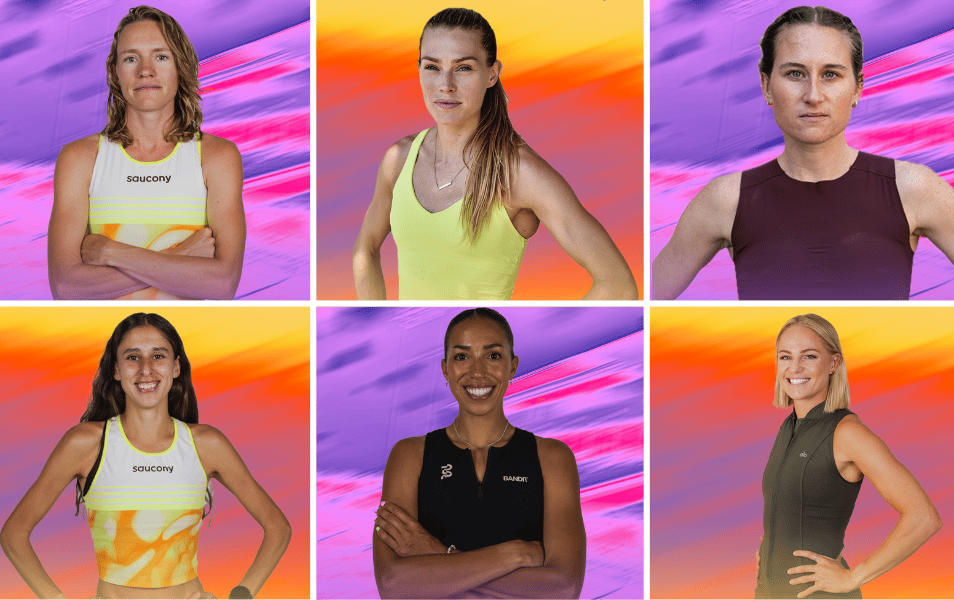
Meridia
When Katie Camarena got out of college, hoping to kickstart a professional running career, she had one sponsorship offer on the table: move across the country, and train with an elite team, on limited pay. She declined.
Pro teams are where so many of the world’s brightest runners go to become the best, using top coaches, healthcare experts, and cutting edge equipment and facilities. A single sportswear giant often foots the bill – and calls the shots.
“There’s so much power in the teams,” according to pro runner Annie Rodenfels, who said there can be a lack of flexibility and freedom. “It can be difficult to be told what to do, and when, and where.”
It can feel like a “very controlled environment” for athletes, she said, “which is tough place to be when you’re trying to forge your life away from the sport.”
Rodenfels and Camarena are founding members of Meridia, a new athlete-owned pro track team based in Boulder, Colorado. Rather than hand the reins to one shoe or apparel sponsor, they hope to strike a collection of brand partnerships outside the running space, and prioritize athletes’ independence, letting them choose their coaches, find their own sportswear sponsors, and train where they want.
“Just because noone else does it doesn’t mean that we can’t,” said Camarena, now sponsored individually by Saucony. “People are excited to see a group of six women going out on their own and trying to start something new.”
Other athletes might have previously worried about “joining something that’s never been done before and might fail,” she added. “I feel like that’s something Colleen doesn’t have.”
Meridia is the brainchild of Colleen Quigley, an Olympian who competed in the 3000m steeplechase at Rio 2016. Juli Benson, her coach, is advising the venture. “Change is hard,” said Quigley. “People have a hard time doing things differently.”
Quigley says she’s only had a handful of conversations with people who don’t get what she’s attempting to build. Some people “think it has to be a certain way because it’s always been that way,” she said, and refuse to consider “how it could be, how we could serve athletes and brands better doing it differently.”
But athletes get it, she stressed. Many of them – and many of their fans – want changes at the top of the sport.
Quigley, sponsored by Lululemon and previously by Nike, saw a recent move by the latter – which overhauled its professional coaching network to launch Swoosh TC earlier this year – as “recognition that what they were doing wasn’t really serving them, or the athletes,” she said. “So they’re willing to try something different, too.”
Meridia is in talks with possible sponsors, and hopes to reach deals with “non-endemic” brands that don’t usually sponsor teams or athletes. The pitch is clear: ahead of the LA 2028 Olympics, put your brand in front of track and field’s passionate fanbase, via a team set up to tell it compelling stories.
Two brand partners on board a year from now “would be pretty amazing,” said Quigley. “We’re three weeks in, so we’ll see if that vision pans out.”
In the meantime, Meridia is a self-funded enterprise, and the team is seeking support. Its founders are organizing a virtual Meridia Mile on August 9th to raise money, and plan to start selling merchandise soon.
“Being in control of everything is awesome,” said Rodenfels. “To feel for once that you’re the one making all the decisions, and get to decide what all this looks like, feels super empowering.”

TCS London Marathon
Edition 20 • What Olympian Eilish McColgan (pictured) learned when she finally ran a marathon • Read
Edition 19 • Paralympian Richard Whitehead is running 20 marathons in 2025 – and not holding back • Read
Edition 18 • Calli Hauger-Thackery is not content, after stepping up a level at April’s Boston Marathon • Read
ONE LAST THING…
Abby Hall had a rough few years after suffering a serious knee injury in 2023. She only learned she had a place at Western States in April, when another runner, EmKay Sullivan, used the event’s pregnancy deferral option.
In a comeback for the ages, Hall won last weekend’s race, finishing in 16 hours 37 minutes: the fourth-fastest women’s time ever.
In a post-race interview, she advised anyone in the midst of a similar ordeal – whether grappling with an injury, or just fighting to get back to doing something they love – to ensure they don’t lose sight of whatever they’re trying to return to.
“I really kept these dreams pinned at the front of my mind, even when it felt improbable, and even when it felt like a lost cause,” she told iRunFar. “But I really believe that… trusting the process actually works.”